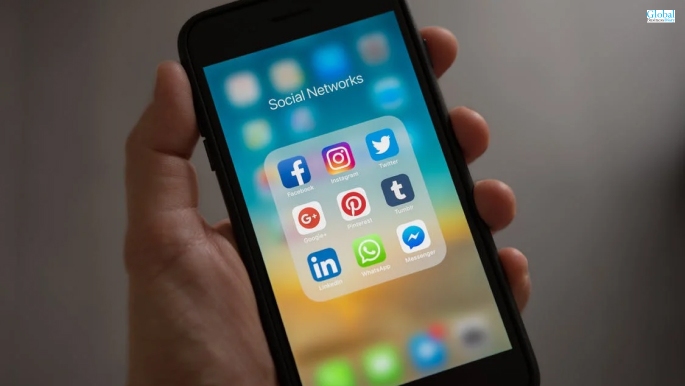How To Tell If Your Married Boss Likes You Romantically?

It is usually not that uncommon for your married boss to notice the employees, but when it gets more than just noticing becomes something more, what then?
It is important to know the right amount of balance between personal and professional relationships, especially between a married boss and their employee.
But when it comes to your boss showing some extra attention to you, the signs are pretty clear, but how to tell if your married boss likes you romantically? That’s a whole new ball game.
How To Tell If Your Married Boss Likes You Romantically?
There are many different signs suggesting that your married boss likes you in a romantic way. If you are not aware of such signs yet, then you should definitely start paying attention more than you normally do.
So keep on reading to know “how to tell if your married boss likes you romantically.”
1. They Want To See You Outside Of Work

Do you and your boss meet outside of the workplace? If so, then things are no longer in a professional environment. Suppose your boss asks you for a drink or to grab dinner; then it is a huge clue that you should look for.
And more so when they are hanging out with you alone and not even inviting other employees, then it’s possible that your boss may like you.
2. Your Boss Makes Excuses To See You When At Work

When your boss has a crush on you, they would do anything to see you more, even at the office, and to spend time alone with you.
Silly excuses like sudden face-to-face meetings may even come up to your desk to check up on you. Then there are definite signs that they might like you beyond just the employer-employee relationship.
Read more: 10 Signs Your Boss Is Testing You
3. They Make Your Job Easier

Suppose your boss shows favoritism or liking towards you, then they would try to make your life easier at the office. Such behaviors as helping you to complete your work, valuing you over other employees, and excusing your mistakes.
This kind of behavior from a boss is very unfair and something that should not happen, but if they probably like you, then you can receive such treatment.
4. They Strike Up A Personal Conversation

Suppose your married boss is looking forward to now you more than just in a professional way, then they will talk to you more auto personal things.
This doesn’t have to mean that your boss likes you, but they are definitely trying to get to know you more on a personal level. Your boss might ask you about your hobbies and other interests in order to know you more.
5. They Don’t Mention Their Spouse

A big sign of whether your married boss has feelings for you or not is whether they talk about their spouse in your presence. If they are into you, then they are totally gonna avoid the topic of their spouse or fiancé when you are present.
They might hide the wedding ring or hang up on the call of their spouse when you are around, and even act abnormally when they are near.
6. They Show Interest In Your Personal Life

When your married boss is talking to you about personal things, then observe properly whether they are showing any interest in your personal life or not. Suppose your boss likes you, then they are definitely going to ask you about your love life in a sly manner.
And if you are in a relationship, then wait and see your boss’s expression, whether you can see a tinge of jealousy or not. If they quickly change the topic, then they are a bit jealous, knowing that you are in a relationship.
7. They Add You On Social Media

Social media is a very “non-professional” platform, so let’s just say you’re married boss is showing interest in you; they surely wanna know more about you and your life outside the office.
And what better way to know about you than to follow you on social media? This way, they can even keep tabs on your whereabouts and your likes and dislikes.
8. They Send Messages To You For No Reason

Trying to establish a more personal connection with you, your boss might text you when outside the office. They might be about “How are you doing?” or maybe “Have you reached home properly?”
Even if these texts seem quite normal, if they suddenly start sending you suggestive texts that they might like you, then there is no clearer sign.
9. They’re Subtly Flirty With You

Suppose you think your boss might be flirting with you, then you can easily recognize the signs of subtle flirting if you are an expert.
Things like lightly touching you after a joke, making eye contact with you, and making suggestive comments to you. The signs are clear that your boss likes you, forgetting the fact that they are married.
Read more: 10 Signs Your Boss Cares About You
10. They Get Physically Touchy With You

Is your boss too touchy with you? Such as hugging you or maybe touching you unnecessarily? In a workplace, handshakes and the occasional pat on the back are acceptable.
But anything more than that is definitely a sign that your boss might like you, and you don’t have to know any more signs of how to tell your married boss likes you romantically.
How Can Romanticism In The Workplace Hurt Your Career?
Romance in the workplace can lead to a higher level of distraction. It can ruin your concentration level and prevent you from achieving your set goals. If your Boss becomes flirty with you in the workplace, there is a high chance that you are in a high-risk zone.
1. Your Professional & Personal Life Can Be At Stake
Your professional and personal life can be at stake. There are high chances of distraction and fewer chances of growth. This will offer you short-term happiness and long-term sadness. However, if you like this romanticism of your boss for a longer period, there is a high chance you will lose your self-esteem and confidence soon.
2. Growth Opportunities Will Become Less
You will become distracted from the path of your career growth due to the romanticism in the workplace with your boss. This can lead to less searching for better career opportunities for you in the future. Most importantly, you will be stuck in one place. Your career will be trapped in the mud of stagnancy.
3. You May Be Confused About Your Boss’s Mood Swings
Romantic employees take care of the boss’s mood, not his or her work. Ultimately, this can lead to short-term gains and long-term losses. There is a high chance that you miss out on some happy moments with your family and friends out of an illusory relationship that ceases to exist. The human mind is not very predictable. So if you have a woman boss, then the challenge will become 10 times more difficult for you to keep your boss happy all the time.
4. Better To Leave The Job
Now, every problem in this world comes with a solution. So, here also is no exception to this matter. If you get signals from your boss that they try to carry a romantic relationship with you, immediately leave the job for your own betterment. Don’t enjoy this relationship longer than initially, as it will make you smile, but ultimately it will make you cry.
5. Skill Enhancement Chances Will Be Less
Your skill Enhancement chances will be less due to your romantic boss. You will receive your next best job based on your skills, not your present boss’s reference. Keep this thing in mind and then enter into a romantic relationship with your boss. There is a fundamental rule of thumb: “ Love your work.” As companies cease to exist.
Frequently Asked Questions !! (FAQs):
Here are some popular questions you might want to get an answer to –
Ans: Did your boss just tell you to stay late for a meeting after work? Well, this might be one of those tell-tale signs that he/she is into you. These bosses usually try to persuade their favorite employees to stay after work so that they can spend time together. This is one of many signs that they like you secretly but are still hiding it.
Ans: Although the office is a professional platform, that does not mean we leave our personal feelings behind at home when we head to work. It is possible for any human being to be attracted to others despite their differences in the employment hierarchy. Office romances and work spouses are very common in many countries, and it is quite normal for bosses to develop feelings for their employees.
Ans: Here are some common signs that your boss might have some feelings for you –
• They may challenge you occasionally.
• When your boss relies on you too much, it means that they secretly admire you.
• They can leave key assignments and clients to you and feel no worry.
• They make you feel respected at work.
• They are often willingly recognizing and admiring your work.
Check out this YouTube video: 17 Signs Your Boss Likes You Romantically
Wrapping Up!
Now that you know all the ways to know how to tell your married boss likes you romantically, you can do something about it now.
If you are uncomfortable with it, then ask for advice from someone trustworthy on how to deal with it. Then skillfully and professionally deal with the situation. So if you find this article helpful, then leave a like and comment below to get more similar content from us.
Read Also:













